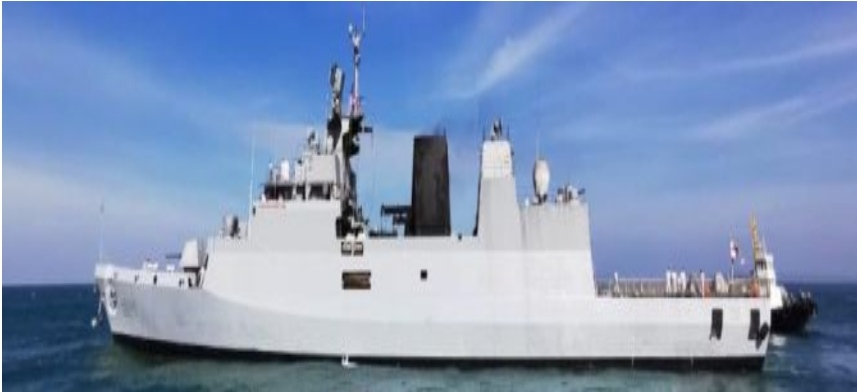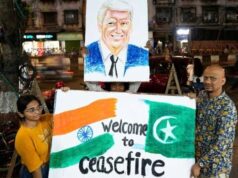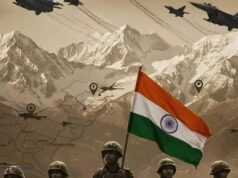China Has Become A Maritime Power; It’s Time India Caught Up

Naval power will play a decisive role in India-China rivalry. But India needs greater vision, realistic targets and proper implementation to achieve its maritime goals
by Arun Prakash
The competition between China and India in the economic and military spheres, no matter how asymmetric, makes it inevitable that the two will remain rivals in the Asian strategic space.
While early signs of China’s “maritime awakening” had emerged with its 2004 Defence White Paper (DWP), most China-watchers were sceptical when Hu Jintao declared at the 2012 Party Conference that China aimed to become “a maritime great power”. Scepticism gave way to apprehension as it became clear that Hu’s announcement was underpinned by a time-bound programme for acquiring the full gamut of maritime capabilities. Today, China has not only overtaken the US Navy in numbers, it is also the world’s top ship-producing nation, with the largest merchant navy, coast-guard and fishing fleet/maritime militia in the world.
The competition between China and India in the economic and military spheres, no matter how asymmetric, makes it inevitable that the two will remain rivals in the Asian strategic space. Having weathered the Covid-19 pandemic with limited economic impact, China has reaffirmed its revanchist agenda via its refusal to resume the status quo ante in Eastern Ladakh. An economically strong, expansionist, and militaristic China will use the Maritime Silk Route initiative to expand its sphere of influence and ensure dominance in the Indo-Pacific. The PLA Navy’s crucial role in this endeavour, clearly spelt out in China’s 2019 DWP, relies on its formidable maritime/industrial capabilities.
In this context, the yawning gap between the maritime capabilities of China and India is shown by this example. China laid down its first indigenous aircraft-carrier in 2015 and commissioned it in 2018 — an astonishing industrial/technological feat. Work on India’s first indigenous aircraft-carrier commenced in 2009 and in 2021, the ship awaits completion. The roots of this debility are not far to seek. India launched its first “maritime modernisation” plan, bearing the catchy title of “Sagarmala” in 2003, almost simultaneously with China. But its focus was limited to port development and road/rail connectivity.
Politicians, however, assumed that Sagarmala was a panacea for all of India’s maritime shortcomings and sold it to the public as such. The exclusive focus of successive governments on port development has led to gross neglect of other critical components of India’s maritime capability. These include merchant shipping, shipbuilding, ship repair, seabed exploration and fisheries etc; all of which have implications for India’s maritime security as well as its “blue economy”. It is instructive to follow the trajectory of Sagarmala because it is illustrative of India’s “sea blindness” as well as political myopia and bureaucratic ineptitude.
Sagarmala, in its first avatar, was announced in August 2003 by the Vajpayee-led NDA government with the stated objective of ensuring that all major ports would be connected to the Golden Highway Quadrilateral through a network of expressways, facilitating country-wide goods traffic to-and-from ports. It was abandoned within months, following the declaration of the general election.
The UPA government, which won office in 2004, replaced Sagarmala with the National Maritime Development Plan (NMDP) in 2005. While the stated aim of the NMDP-2005, much like that of Sagarmala, was to “develop India’s maritime sector”, it was actually confined to modernisation of port infrastructure and enhancement of rail-road connectivity to these ports. To fulfil these goals, the NMDP included 276 projects at an investment of Rs 1,00,339 crore.
Progress of the plan, however, remained tardy. Seven years after its commencement, the Lok Sabha was informed that only 82 of the 276 projects had been completed, while 30 had been dropped and 66 were still in the planning stage. In 2011, the UPA government decided to abandon the NMDP-2005 and replaced it with a new 10-year plan titled Maritime Agenda 2010-2020 (MA-2020). While the Sagarmala-2003 and NMDP-2005 were focused mainly on port modernisation and enhancing rail-road connectivity, MA-2020, ostensibly, had a much broader scope. It envisaged an outlay of Rs 5 lakh crore to achieve quantum jumps in shipping tonnage, shipbuilding, and coastal trade, apart from ports, cargo-handling and other capacities.
However, a reading of the MA-2020 document served to seriously undermine its credibility on two counts. Firstly, it had set extremely unrealistic targets; aiming to increase in just 7-8 years shipbuilding capacity by five times and enhancing cargo throughput in Indian ports by four times. Secondly, it showed clear signs of confusion in the ministry, citing itself as “a roadmap to guide this ministry” in one place, while stating elsewhere that it was “more an agenda for consideration, rather than agenda for action”. Predictably, MA-2020 failed to achieve anything of substance before it was overtaken by the next plan.
The NDA government that came to power in 2014 followed the earlier practice, and having terminated MA-2020, revived the Sagarmala project. Like all its predecessors, Sagarmala-2015 also focusses on modernising ports and enhancing connectivity. This version of Sagarmala held out greater hope because it had a structured, progress-monitoring framework. However, data from the Ministry of Shipping’s Sagarmala Project Tracker, updated until September 2019, shows a project completion rate no better than past trends. Tellingly, while the plan aimed to create 40 lakh direct jobs and 60 lakh indirect jobs, in 2019, the government admitted that only 10,000 jobs had been created.
Initiating programmes with inappropriate aims, choosing unrealistic targets, abandoning/renaming projects and not ensuring faithful implementation are the reasons underlying the dismal state of our maritime capability. It is time India evolved a National Strategy for the maritime sector that charts a 50-year path and receives Parliament’s approval to ensure survival through changes of government.
Nations which were lagging behind India a few decades ago have surged ahead because of their vision and dynamism in the vital maritime arena. Today, India’s major ports are overloaded and inefficient, our shipbuilding industry is moribund, the merchant fleet is inadequate and growing at a snail’s pace, seabed exploitation has yet to take off, the fishing industry is backward, and human resources are lacking everywhere.
All eyes are focused seawards, and naval power is going to play a decisive role in the India-China rivalry. But navies remain hollow without the backing of a strong maritime sector. If “Atmanirbharta” has relevance anywhere, it is here.




